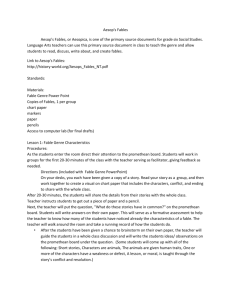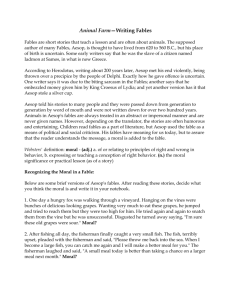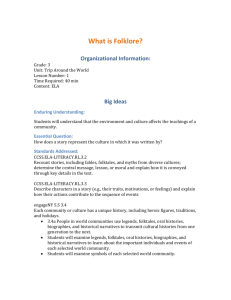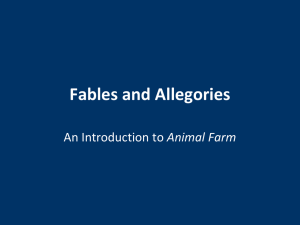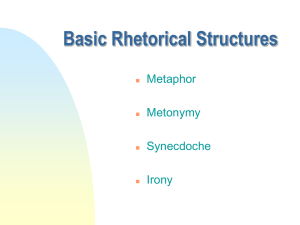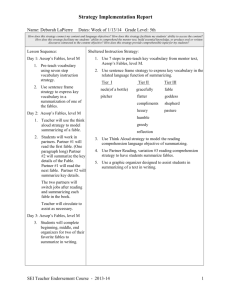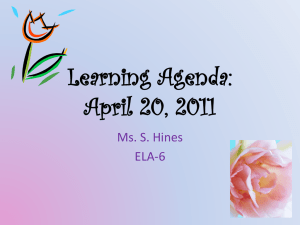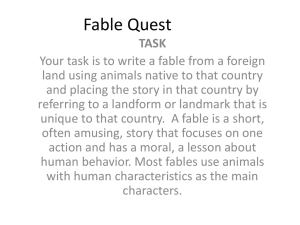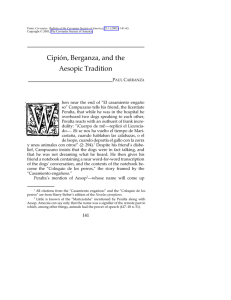Animal Farm—Writing Fables
advertisement
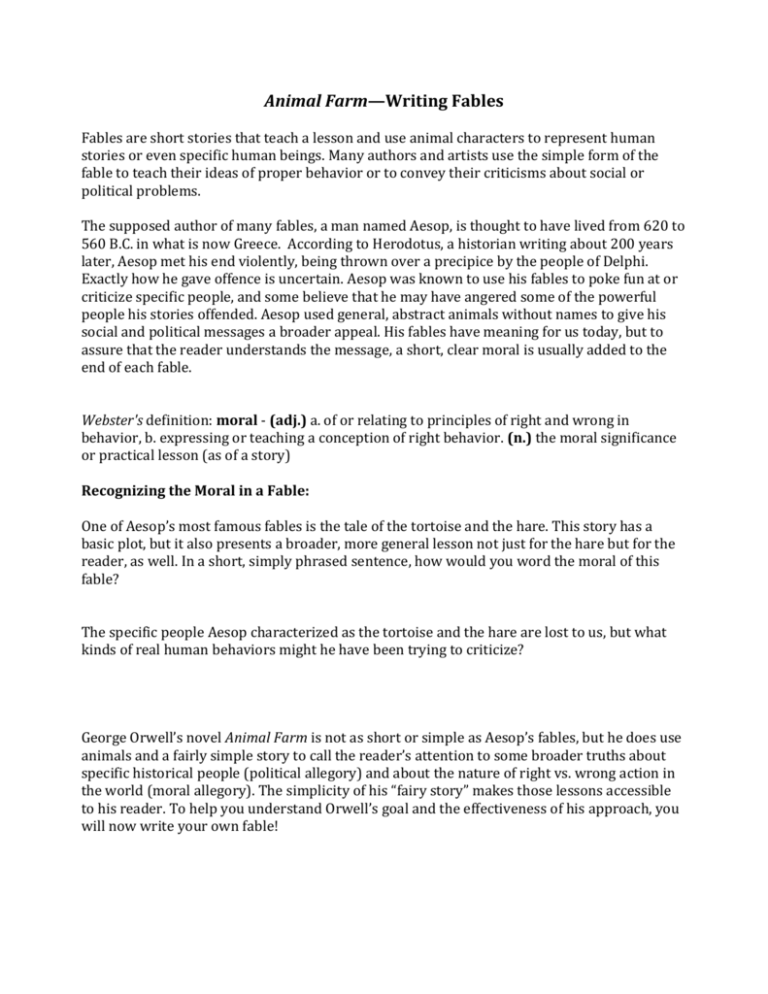
Animal Farm—Writing Fables Fables are short stories that teach a lesson and use animal characters to represent human stories or even specific human beings. Many authors and artists use the simple form of the fable to teach their ideas of proper behavior or to convey their criticisms about social or political problems. The supposed author of many fables, a man named Aesop, is thought to have lived from 620 to 560 B.C. in what is now Greece. According to Herodotus, a historian writing about 200 years later, Aesop met his end violently, being thrown over a precipice by the people of Delphi. Exactly how he gave offence is uncertain. Aesop was known to use his fables to poke fun at or criticize specific people, and some believe that he may have angered some of the powerful people his stories offended. Aesop used general, abstract animals without names to give his social and political messages a broader appeal. His fables have meaning for us today, but to assure that the reader understands the message, a short, clear moral is usually added to the end of each fable. Webster's definition: moral - (adj.) a. of or relating to principles of right and wrong in behavior, b. expressing or teaching a conception of right behavior. (n.) the moral significance or practical lesson (as of a story) Recognizing the Moral in a Fable: One of Aesop’s most famous fables is the tale of the tortoise and the hare. This story has a basic plot, but it also presents a broader, more general lesson not just for the hare but for the reader, as well. In a short, simply phrased sentence, how would you word the moral of this fable? The specific people Aesop characterized as the tortoise and the hare are lost to us, but what kinds of real human behaviors might he have been trying to criticize? George Orwell’s novel Animal Farm is not as short or simple as Aesop’s fables, but he does use animals and a fairly simple story to call the reader’s attention to some broader truths about specific historical people (political allegory) and about the nature of right vs. wrong action in the world (moral allegory). The simplicity of his “fairy story” makes those lessons accessible to his reader. To help you understand Orwell’s goal and the effectiveness of his approach, you will now write your own fable! Writing Your Own Fable To write your fable, start by identifying a problem or kind of behavior that you wish to criticize, and then craft a story that illustrates the dangers, shortcomings, or fault in that problem or behavior. You can also choose to write a more positive fable by focusing on proper behavior or right action. Next, develop a story with a clear beginning, middle, and end in which your characters enact the problematic or admirable issues you want to address. Use animal characters to illustrate human traits, and be sure there is a lesson to be learned. The lesson needs to be meaningful, not trite (so, no fables about “look both ways before you cross the street!”). Some fables show characters suffering for making mistakes, some show characters rewarded for good choices, some contrast the two, and others use different approaches. Make sure your story makes sense—each step should lead to the next, and the story should build to a conclusion that fits the story and reveals your moral in a way your reader can understand. ***You must also include an illustration for your fable!*** Your fable should be in the following format: Make sure your name appears somewhere on your fable. Word process (double space) or neatly write in pen. Be sure to edit for spelling and grammatical errors. Your fable can be as funny as you wish. It should have a moral, as all fables do. On the back of your final copy, please write the moral to your fable. Your fable should include dialogue between whatever animals are involved in the story. The length of the fable is up to you, but fables that show obvious effort and attention will receive a better score. If you choose, you can write your fable in picture book form. Your fable will be due in class on Monday, December 15th. We may share them aloud, so be prepared!
